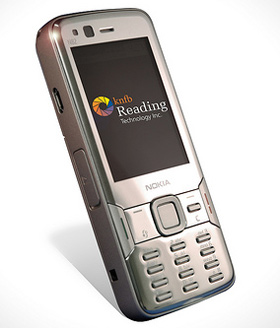
Known as the Reader Mobile product line, it includes the knfbREADER and the kREADER which allow blind users to hear the content of the document in clear synthetic speech. For users who can see the screen and those with learning disabilities, the device will can enlarge, read, track and highlight printed materials using the N82 handset’s easy-to-read display.
Further, the Nokia N82 device integrates a high-resolution camera, thus the Reader software offers effective text-to-speech conversion and Kurzweil’s intelligent image processing software, further enhancing real-world images captured by the phone’s camera. Users will be able to take pictures of just about anything and then comprehend the printed material using this software.
Further, blind users will have easy access to functions like video/music playback, GPS, wireless communications, photography, email, text messaging, calendar and task functions.
It’s a good thing that the Reader and the mobile phone when bundled together weighs just 4.2 ounces.
According to Dr. Marc Maurer, President of the National Federation of the Blind, “The knfbREADER Mobile will allow the blind unprecedented access to the printed word, affording a level of flexibility and capability never before available. No other device in the history of technology has provided such portability and quick access to print materials. The NFB promotes equal opportunity for the blind, and this Reader will make blind people dramatically more independent. The result will be better performance at work, at school, at home, and everywhere else we go. This Reader will substantially improve the quality of life for the growing number of blind people and people who are losing vision, including seniors.â€
Ray Kurzweil, President and CEO of K-NFB Reading Technology said, “Technology that enlarges the printed word or converts it to speech has dramatically improved the lives of millions of Americans with many types of disabilities, enabling them to read and comprehend printed materials to which they never before had access.â€
Interestingly, the first machine of this type was around the size of a washing machine! Hence, it was not really accessible to people. Now, this innovation has created opportunities disabled people never had considered before due to the large amounts of reading required in certain occupations, concluded Kurzweil.
It really is great that technology is being put to good use. Now, the dyslexic, visually disabled and even the blind will be able to read.
